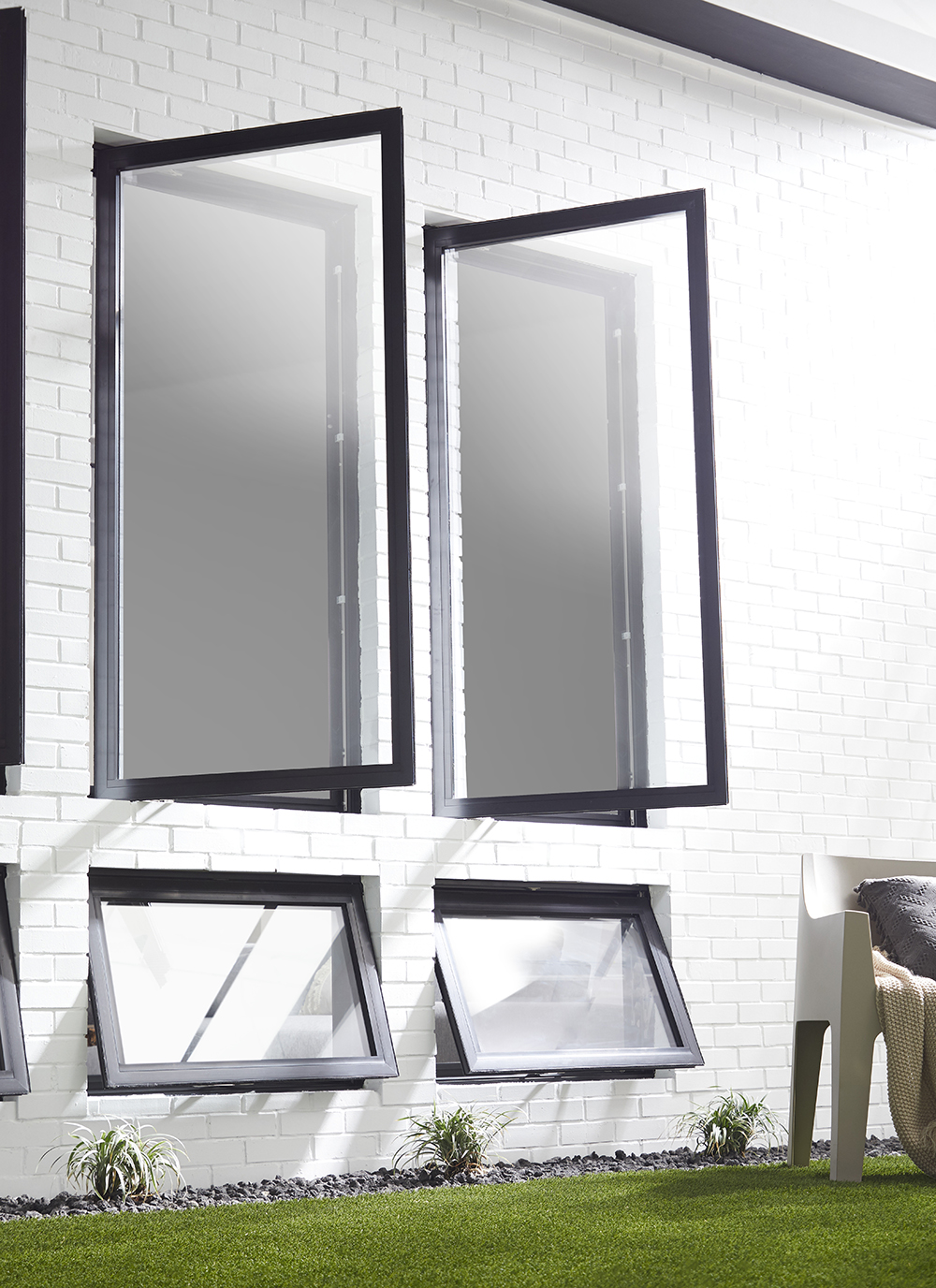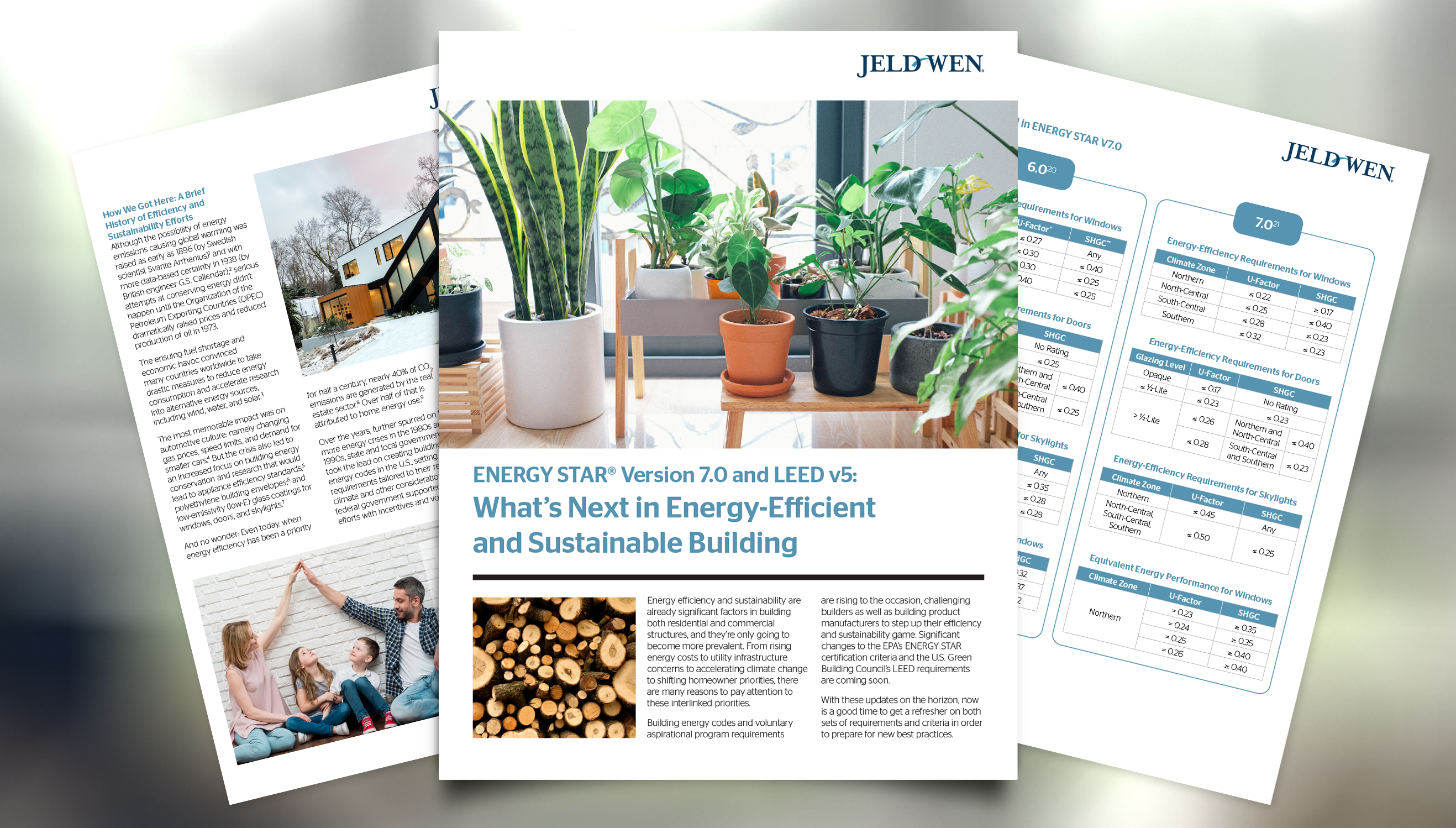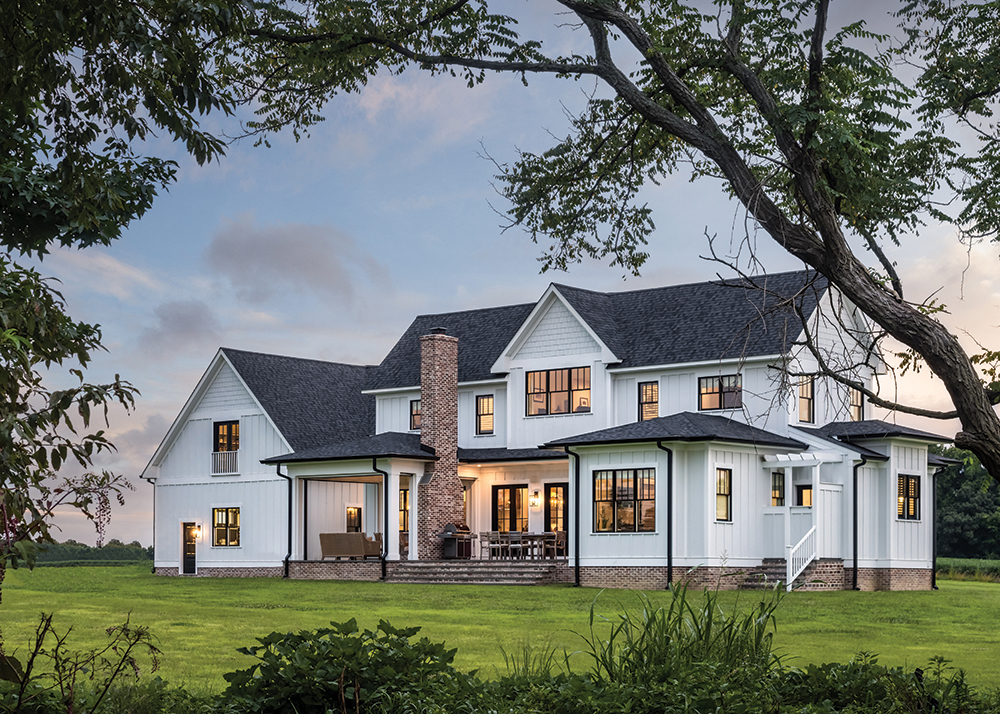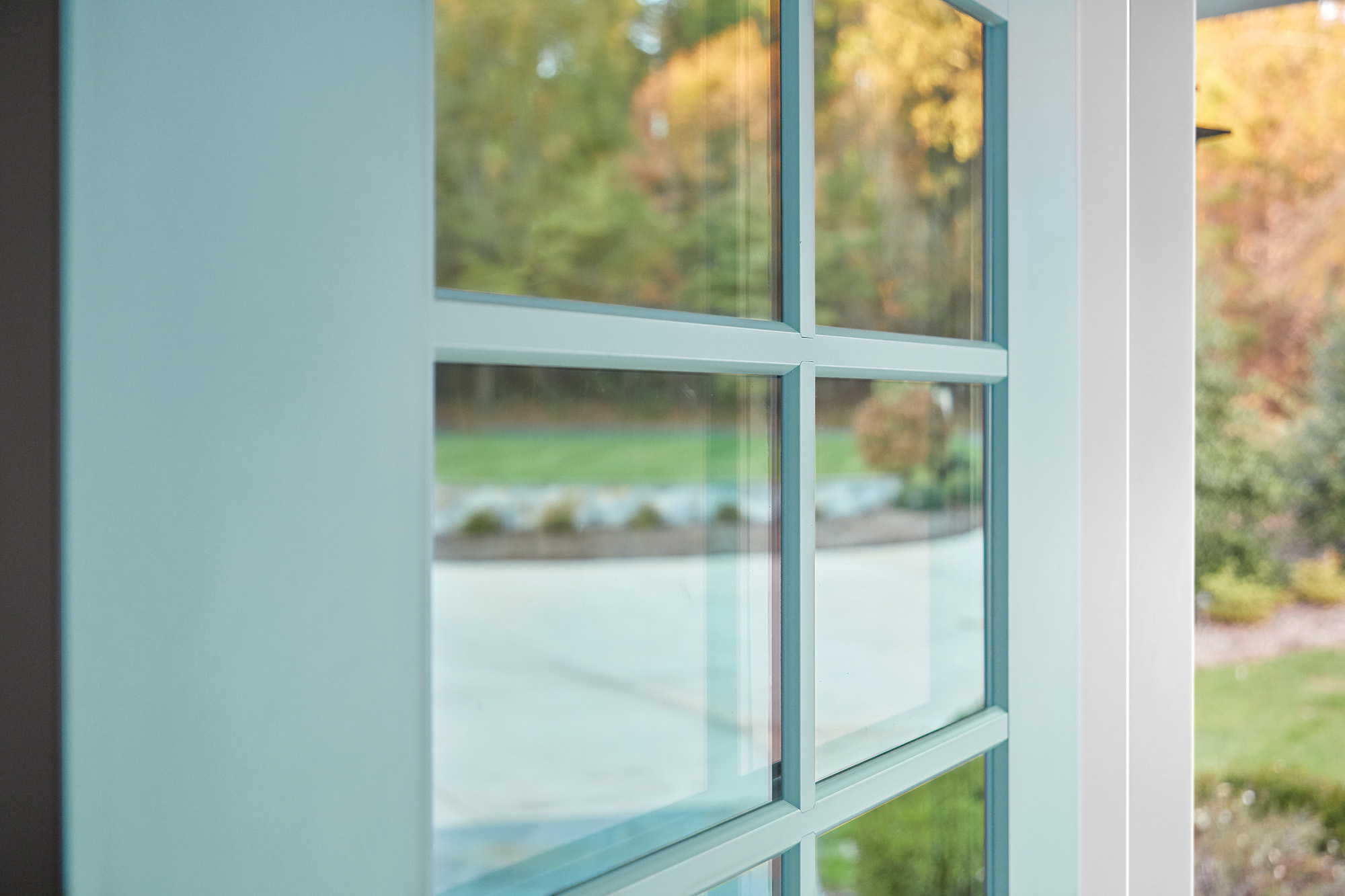New requirements go into effect soon. Here’s what’s new and where to find ENERGY STAR® certified JELD-WEN® products.
Administered by the U.S. Environmental Protection Agency (EPA), the ENERGY STAR® program was created in 1992 to make it easy for homeowners and businesses to find products designed to reduce energy use. The concept of ENERGY STAR is simple: The EPA sets energy efficiency criteria, and products that meet them can display the ENERGY STAR label. This label gives consumers and businesses an easy and trusted way to confirm the products they’re buying will help them save energy, save money on energy bills, and help protect the environment.
Over time, the EPA revises the energy efficiency criteria to be more stringent — in other words, products must be even more energy efficient to earn the ENERGY STAR label. This is a good thing, as it challenges manufacturers to innovate by improving the energy efficiency of their current products and developing new energy-saving products. The next update is almost here. ENERGY STAR Version 7.0 goes into effect on October 23, 2023, with a significant update to certification criteria for residential windows, doors, and skylights. Here are a few of the highlights to be aware of for construction or remodeling.
What’s new for windows and doors with ENERGY STAR Version 7.0

Updated U.S. Climate Zone Map: The four climate zones have been modified to better reflect weather patterns and environmental changes. ENERGY STAR certified products are certified for one or more climate zones based on meeting the energy efficiency criteria for each zone. Find your climate zone here.
More stringent U-factor and solar heat gain coefficient (SHGC) criteria for window and door products: In all U.S. climate zones, the U-factor and SHGC measurements needed to achieve ENERGY STAR certification have become more stringent. (A refresher: The lower the U-factor number, the better a window or door insulates. The lower the SHGC number, the less solar heat a window or door lets in [or the greater the shading ability of the glass]. Lower measurements in both areas generally indicate greater energy efficiency.)
Specifications for windows changed in all climate zones
- Northern: U-factor decreased from ≤.27, SHGC is no longer “any”
- North-Central: U-factor decreased from ≤.30, SHGC did not change
- South-Central: U-factor decreased from ≤.30, SHGC decreased from ≤.25
- Southern: U-factor decreased from ≤.40, SHGC decreased from ≤.25
For doors, only the opaque door criteria did not change:
- Opaque Glazing Level: no changes
- ≤1/2 Lite Glazing Level: U-factor and SHGC decreased from ≤.25
- > 1/2 Lite Glazing Level
- Northern: U-factor decreased from ≤.30, SHGC did not change
- North-Central: U-factor decreased from ≤.30, SHGC did not change
- South-Central: U-factor decreased from ≤.30, SHGC decreased from ≤.25
- Southern: U-factor decreased from ≤.30, SHGC decreased from ≤.25
All residential window, door, and skylight products manufactured after October 23, 2023, must meet Version 7.0 requirements to be ENERGY STAR certified and bear the ENERGY STAR label.
You can see the updated U.S. Climate Zone Map and compare the specific changes from Version 6.0 to Version 7.0 in our special report on changing ENERGY STAR and LEED requirements.
Remodel and Replace pros, help your clients receive eligible tax credits
Consumer tax credits are available for ENERGY STAR certified products purchased between January 1, 2023, and December 31, 2032, for an existing home (must be the primary residence). The tax credits are based on 30% of the cost of the products, with a maximum annual limit of $600 for windows and skylights and $500 for exterior doors.
There are performance requirements for qualifying. Windows must meet ENERGY STAR’s Most Efficient (ME) window designation, with specific U-factor and SHGC requirements:
| CLIMATE ZONE | U-FACTOR | SHGC |
| Northern | ≤ 0.20 | ≥ 0.20 |
| North-Central | ≤ 0.20 | ≤ 0.40 |
| South-Central | ≤ 0.20 | ≤ 0.25 |
| South | ≤ 0.20 | ≤ 0.25 |
Exterior doors (sliding and swinging) simply require ENERGY STAR compliance in the climate zone in which they will be installed.
If your projects include renovations and remodels with ENERGY STAR certified windows and/or doors, and your homeowner clients are planning to apply for the tax credits, they should hold onto the NFRC labels that ship on the windows and doors. The NFRC labels will provide the documentation required to apply for the tax credits. Keep this in mind as you install the windows and doors and clean up afterwards.
Learn more about ENERGY STAR related homeowner tax credits here (and share this link with your clients).
How to find ENERGY STAR certified JELD-WEN® windows and doors
JELD-WEN has been an ENERGY STAR Partner since 1998, the first year windows were included in the program. Since then, numerous JELD-WEN windows and doors have been ENERGY STAR certified.
To see which JELD-WEN products are currently ENERGY STAR certified, please consult our National Fenestration Rating Council (NFRC) data for each JELD-WEN product line. ENERGY STAR certified JELD-WEN products are color-coded by climate zone.

Learn more about ENERGY STAR and Version 7.0
Want to know more about the ENERGY STAR program and the upcoming V7.0 changes? Read our special report, ENERGY STAR® Version 7.0 and LEED v5: What’s Next in Energy-Efficient and Sustainable Building.
For more information on the ENERGY STAR certification program for windows, doors, and skylights, visit the ENERGY STAR website.
Share these tips for improving energy efficiency at home with your clients.
Find the nearest JELD-WEN dealer or retail location here.
ENERGY STAR is a registered trademark of the U.S. Environmental Protection Agency.




Comments are closed.